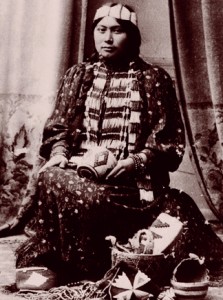Dentalia, money from the sea
 The history of Native American money is a fascinating one. American Indians have always had quite sophisticated forms of trade. For many North American native communities, currency once consisted of dentalia (a type of clam shell harvested from deep waters off Vancouver Island), sometimes referred to as “wampum.” Dentalia was highly prized throughout the continent and was stored by the Iroquois, one of the most prosperous and powerful tribes on the eastern seaboard.
The history of Native American money is a fascinating one. American Indians have always had quite sophisticated forms of trade. For many North American native communities, currency once consisted of dentalia (a type of clam shell harvested from deep waters off Vancouver Island), sometimes referred to as “wampum.” Dentalia was highly prized throughout the continent and was stored by the Iroquois, one of the most prosperous and powerful tribes on the eastern seaboard.
Dentalia was strung in fathoms that determined their value. These dentalia number eighty to the fathom, whereas the standard, high value dentalia numbered forty to the fathom. Photo by Norma Lee Kayler. Courtesy of Dr. Robert H. Ruby
Although many settlers scoffed at Native American currency in the beginning, wampum was later used by many colonists as a form of currency. For instance, Peter Stuyvesant paid his workers in wampum when they constructed the New York citadel. The island of Manhattan was purchased for wampum.

